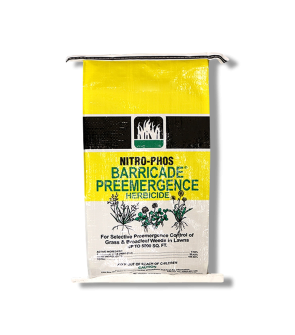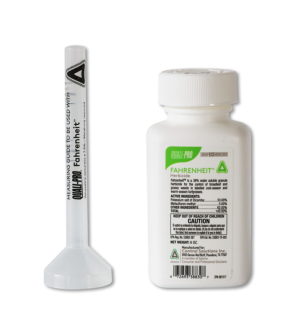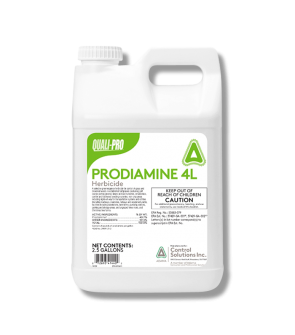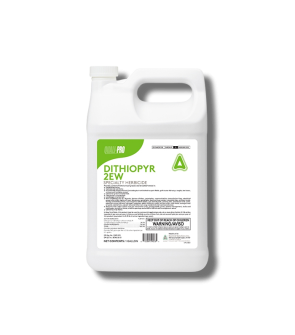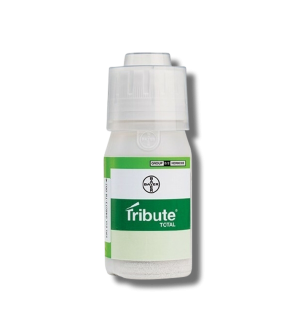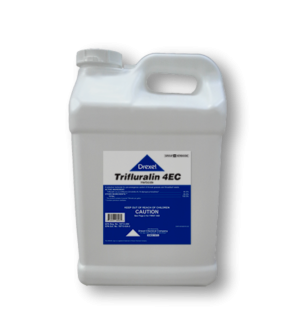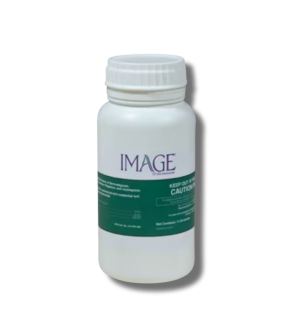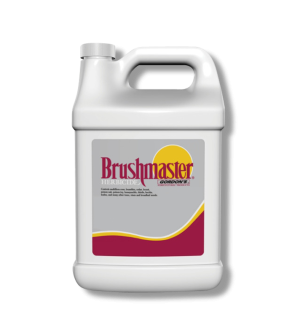Gain access to personalized product screening, the best pricing, rewards, and more!
Most Effective Products
Carpetweed Control: How to Get Rid of Carpetweed
This page is a general DIY guide for controlling carpetweed. Using the recommended products and methods, you can control carpetweed. Follow this DIY article and use the recommended products; we guarantee 100% control of carpetweed.
Carpetweed, also called devil's grip and Indian chickweed, is native to Africa and tropical America but is found in most of the United States and is especially common in the East. A broadleaf summer annual, carpetweed grows in disturbed sandy soil of moderate to excellent fertility and is a common problem in garden beds, newly seeded lawns, waste areas along roadsides, and railroad tracks.
Since carpetweed is an annual weed, its reproduction is through seeds. Carpetweed can be a pretty big issue in ornamental plant beds and in newly established or thinning turf. Other low-growing weeds can be found in these locations, but there are easy ways to tell them apart. Chickweeds and speedwells are low growers but lack the whorled leaves and forked branching of stems.
If you are having a problem with carpetweed, we can help. Our lawn care experts developed our DIY carpetweed control guide to show you precisely what you need to kill carpetweed and remove it from your yard quickly and affordably.
Identification
Before proceeding with a treatment program, you must be sure that you are dealing with a carpetweed infestation. Careless identification can lead to using the wrong treatment methods, which can be a waste of time and money. Below are the following characteristics to help you understand what carpetweed looks like.

- When carpetweed emerges in spring, its seedlings can easily distinguish it. This plant emerges as a small rosette. As it matures, the stems grow prostrate, can redden, and radiate outwards, forming a circular mat up to 2 feet across and up to 5 inches in height.
- The leaves grow in a whorl arrangement, meaning several leaves, at least three, grow and radiate around a single node. They are a slender ovular shape that tapers to the thin petiole attached to the stem. The leaves are waxy with smooth edges.
- Clusters of two to five small white flowers are produced on slender stalks at the leaf axis in mid to late summer. Small three-parted egg-shaped fruits contain orange-red seeds. The root system is a fibrous taproot.
Use the above description and image to help you properly identify carpetweed. If you are having trouble, you can always contact us. Our lawn care experts will help you correctly identify your weed growth and suggest treatment options.
Inspection
Once you are confirmed that you are dealing with carpetweed, you can move on to inspection. During this phase, you will locate areas where carpetweed is thriving and observe the conditions that allow it to thrive. This information will help you know where to focus your herbicide application.
Where to Inspect
Carpetweed thrives on thin or younger turf. It grows well in moist soil but can also grow in drier environments.
Carpetweed germinates later in the year than most other summer annuals, so it’s easy for this low-growing weed to go unnoticed.
Common sites include, but are not limited to, gardens, newly planted lawns, and along roadsides.
What to Look For
From July to September, carpetweed grows flowers in small clusters. The petals are white when the flowers bloom.
Look for seedlings when the plant is young and larger mats later in its growing season.
Treatment
Before using any herbicide product, make sure you have on the proper personal protective equipment (PPE).
If carpetweed has already emerged on your lawn, it can possibly be hand-pulled out if there aren't many or if it is young. However, if there is a large invasion, some post-emergent products can help to eliminate these invaders.
Post-emergent herbicides containing either diquat, flumioxazin, dicamba, 2,4-d, glyphosate, or oxyfluorfen will work to remove carpetweed.
Step 1: Measure and Mix Herbicide

Fahrenheit Herbicide is a post-emergent herbicide containing the active ingredients Dicamba 33% and Metsulfuron-methyl 5%. This product is a water-dispersible granule that will kill carpetweed and other broadleaf and grassy weeds in warm-seasoned turf.
To make spot applications, use 0.2 oz. of Fahrenheit Herbicide in 1 gallon of water per 1,000 sq. ft. of turf. For larger coverage, apply 3-4 oz. of product in 20-80 gallons of water per acre.
To get rid of carpetweed from cool-seasoned turf, use 2,4-D Amine Selective Post-Emergent Herbicide.
2,4-D Amine Selective Post-Emergent Herbicide is a post-emergent herbicide containing the active ingredient 2,4-D 46.8%. This product is a flowable emulsifiable concentrate that can treat various broadleaf weeds, such as carpetweed, in residential lawns, grassy areas, drainage ditch banks, and cool-seasoned turf.
To make spot applications in ornamental turf areas, use 1/4 pint of 2,4-D Amine Selective Post-Emergent Herbicide in 3 gallons of water.
Measure the square footage of the treatment area to determine how much herbicide material to use. To do this, measure the length and width of the treatment area in feet and multiply them together (length X width = square footage). For acreage, divide the square footage by one acre (square footage / 43,560 sq. ft. = acres).
Mix and apply the product in a handheld pump sprayer for areas less than 1,000 sq. ft. in size. For anything larger than this, you may have to use a backpack sprayer or spray rig.
To mix either of these products, you will need to pour half the amount of water into a bowl and add the measured amount of herbicide material. Next, pour the remaining half of water and agitate until the solution is mixed.
Remember that temporary stunting or chlorosis may occur when making applications over St. Augustinegrass, Bermudagrass, or Zoysiagrass.
Step 2: Apply Herbicide
Use a fan or cone spray pattern to ensure the leaves are fully coated, and spray the weed to the point of wet but not runoff.
To minimize drift, be sure to spray on calm days when temperatures are not too hot and when wind speeds are low.
Because carpetweed is a stubborn and persistent weed, you may need to do repeated applications.
When appropriately applied, affected weeds will turn yellow and begin to die. Reapplication intervals with 2, 4-D Amine Post-Emergent Herbicide range from 21 to 30 days. Reapplication intervals with Fahrenheit Herbicide range from 4 to 6 weeks.
Applications are most effective when the plant is young and growing, before flower or seed production.
Prevention
Once carpetweed has been eliminated from your property, you will need to implement preventative measures to ensure that it does not return.
- The best defense against Carpetweed is a thick lush lawn that is properly maintained and well-fed. A thick, dense, well-fertilized lawn will be better able to choke out carpetweed and not allow them room to establish. We recommend using Solutions 15-5-10 Weed & Feed with Trimec at a rate of 3.2 to 4.0 pounds of product per 1,000 sq. ft. of treatment area. Evenly distribute all of the granules throughout your treatment area. Do not wash from weed leaves for 1 to 2 days after application, and then thoroughly water the treated area after this time frame.
- Mowing when your lawn reaches a height of 3 inches helps to increase turf growth, which outcompetes carpetweed from growing.
- Prevent Carpetweed from regrowing in turf and landscape ornamentals by applying a pre-emergent product like Barricade Pre-Emergent Herbicide Prodiamine Granular. Depending on the turf type, use between 1.5 to 4 lbs. of Barricade Pre-Emergent Herbicide Prodiamine Granular per 1,000 sq. ft. For listed landscape ornamentals, use 2.5 to 5.94 lbs. of product per 1,000 sq. ft. in the fall and spring. When making applications to turf, you will want to use a push spreader, and for landscape ornamentals, you want to use a handheld spreader. Spread the granules in 2 perpendicular passes to get uniform coverage in the treatment area. Water the treated areas with 0.5 inches of irrigation after application or within 14 days.
Key Takeaways
What is Carpetweed?
- Carpetweed is a frustrating lawn weed that, as its name indicates, spreads very quickly on the ground to form carpet-like matting. It is found all over North America.
How to Get Rid of Carpetweed
- We recommend a post-emergent herbicide treatment of 2,4-D Amine Selective Post-Emergent Herbicide or Fahrenheit Herbicide.
Preventing Carpetweed Reinfestations
- To prevent carpetweed, implement proper cultural practices such as watering, mowing, and feeding to make your yard less conducive to carpetweed infestations. You will also need to ensure your lawn is well-fertilized with Solutions 15-5-10 Weed & Feed Fertilizer with Trimec and prevent germinating weeds with Barricade Pre-Emergent Herbicide Prodiamine Granular.










